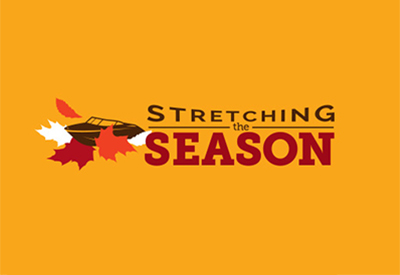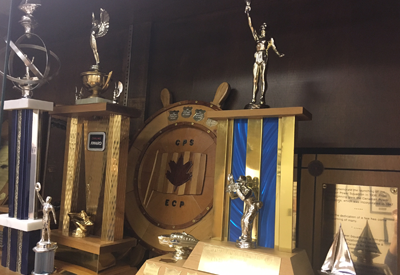Stretching the Season

Sept 26, 2019
Be prepared
During the fall months, when the summer heat begins to wane, fall colours scatter the shoreline, and pristine anchorages, once cluttered, now offer quiet solitude, it’s important that you are prepared for each and every trip. The benefits of fall boating necessitate extra attention and an ability to be self-sufficient because there are fewer boaters in the immediate vicinity should you require assistance.
Before you head out, complete a pre-departure checklist. Take a few minutes to walk around your boat and carry out a visual inspection to ensure your boat and engine are in good shape and mechanically sound. Motor problem or running out of fuel cause more than half of the calls for assistance and these are usually preventable problems. Remember, for fuel, 1/3rd out, 1/3rd back and 1/3rd reserve. It’s a good idea to carry some extra equipment with you as well. Consider the following:
Spare Clothing in a Watertight Bag
• If you will be on the water for more than a few hours, you may want to have spare clothing in a watertight bag. Don’t forget hats and clothing for foul weather. An extra set of clothing will be very welcome if you get wet and need a change.
Tool Kits and Spare Parts
• You may need to make repairs when you’re out on the water. Take along a tool kit and spare parts like fuses, bulbs, flashlight batteries, a spare propeller, nuts and bolts, penetrating oil, duct tape and spark plugs. You should also have and know how to use the tools and materials needed to stop hull leaks until you get to shore. Bring the owner’s manual and any other guidebook you might need on your trip.
First Aid Equipment
• While boating, you may be far from medical help, so take a first aid kit with you. Store it in a dry place and replace used and outdated contents regularly. Pack it to meet your specific needs. Do you know the symptoms of cold shock, hypothermia, heat exhaustion and allergic reactions? Do you know how to stop bleeding, perform CPR or treat shock? If not, take a first aid course as soon as possible. Having first aid skills can make the difference between permanent injury and full recovery, or even life and death. To learn more about first aid training, contact the nearest training provider. Don’t forget the sun screen.
Drinking Water and High Energy Snacks
• Having drinking water and non-perishable snacks on board will help keep passengers properly nourished and hydrated should you encounter a minor breakdown which delays your return. It may also be all that’s needed to pacify younger children who are getting restless.
Pre-Departure Checklist
• Lifejackets/Personal Flotation Devices (PFDs) – Wear them. Have one Canadian approved lifejacket/PFD for everyone onboard. Make sure they are in good condition, no rips or broken zippers or straps. They must be properly sized to fit each person onboard.
• Operator Competency. Take a boating safety course and have a copy of your proof of operator competency (PCOC) onboard.
• Make sure you have all the required safety equipment onboard and that it is in good working order. The same applies for any additional equipment that you are carrying
• Fuel, check your tank and spare fuel
• Brief your passengers on the location and use of all safety equipment including communication equipment
• Position passengers and cargo such that their weight is evenly distributed
• Check and monitor the weather
Condition of your boat:
• Check for hull damage
• Check electrical, mechanical, fuel and cooling systems
• Check throttle and steering are working properly
• Check the oil levels and oil/water filters
• Check all hoses and water lines
• Check the battery for full charge
• Check all drain plugs and carry spares for all through hull fittings
• Check your load distribution for all equipment and passengers
• Run blower for at least 4 minutes before starting the engine(s) and check for proper air flow
Courtesy of the Canadian Safe Boating Council





























